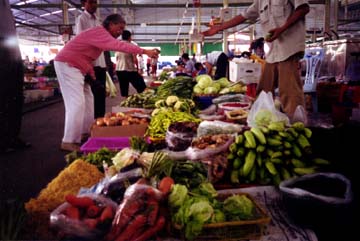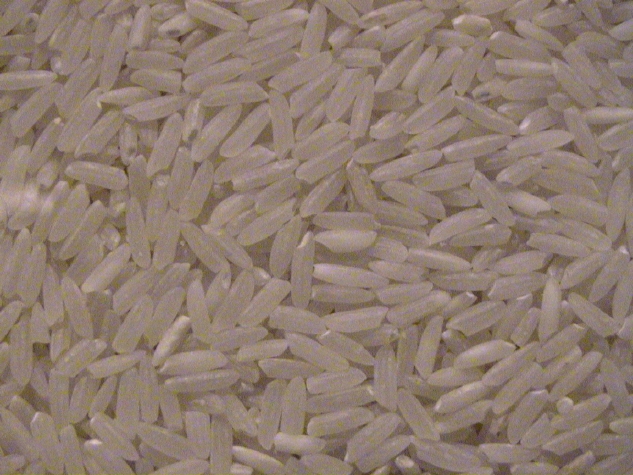Introduction to the Microbiology Of Food – Food Technology & Processing Food Technology & Processing
 Although there is no such thing as a direct proof that aflatoxins cause human liver most cancers within the United States, FDA is anxious concerning the effect of lengthy-term, low-degree consumption of a recognized, highly carcinogenic substance in our meals supply. Chilled foods have to be transported to the patron earlier than spoilage microorganisms make them unfit for consumption. Most foods require pure or synthetic drying before they develop into stable. Although microorganisms cannot grow on dry foods, those who survive the drying process stay alive for extended durations. For many inclined foods, the critical interval is instantly following harvest, during storage and initial drying when the moisture content is high enough to permit mold development. Spoilage can happen either through the fermentation period or upon storage of the ultimate product. Initially, always assume pathogenic organisms are present in a meals product. Molds which type mycotoxins may be present on any food not heated in a closed container. The shelf-life of canned foods results from the destruction of microorganisms capable of development throughout the container during regular handling and storage. As well as, thorough cooking of meat and poultry merchandise adopted by proper storage ought to assist in sustaining meals integrity and less contamination.
Although there is no such thing as a direct proof that aflatoxins cause human liver most cancers within the United States, FDA is anxious concerning the effect of lengthy-term, low-degree consumption of a recognized, highly carcinogenic substance in our meals supply. Chilled foods have to be transported to the patron earlier than spoilage microorganisms make them unfit for consumption. Most foods require pure or synthetic drying before they develop into stable. Although microorganisms cannot grow on dry foods, those who survive the drying process stay alive for extended durations. For many inclined foods, the critical interval is instantly following harvest, during storage and initial drying when the moisture content is high enough to permit mold development. Spoilage can happen either through the fermentation period or upon storage of the ultimate product. Initially, always assume pathogenic organisms are present in a meals product. Molds which type mycotoxins may be present on any food not heated in a closed container. The shelf-life of canned foods results from the destruction of microorganisms capable of development throughout the container during regular handling and storage. As well as, thorough cooking of meat and poultry merchandise adopted by proper storage ought to assist in sustaining meals integrity and less contamination.
 Although milk has been most incessantly recognized throughout the world to be a automobile for Campylobacter, one anticipates that future investigations will determine poultry and its products and meats (beef, pork and lamb) as major reservoirs and autos. These numbers will doubtless improve as mycotoxin investigations continue and identification methods are improved. It is able to doubling in numbers every 1.5 days at 39.2°F. Since excessive heat, larger than 175°F, will inactivate the Listeria organisms, post-process contamination from environmental sources then turns into a vital management level for many foods. The important thing level is that refrigeration temperatures do not cease progress of Listeria. Psychrotropic pathogens embody Yersinia enterocolitica, Listeria monocytogenes, non-proteolytic strains of C. botulinum some strains of enterotoxigenic E. coli and Aeromonas hydrophilia. Despite the fact that Yersinia enterocolitica just isn’t a frequent trigger of human infection within the U.S., it is commonly concerned in illness with very severe symptoms. However, most refrigerated cases are holding close to 45 and even 45°F. This temperature fluctuation reduces shelf-life of the products, and can result in a problem of public well being significance. This heat reduces the microbial population but does not render it “commercially sterile.” Because of this, refrigerated foods have a restricted shelf-life.
Although milk has been most incessantly recognized throughout the world to be a automobile for Campylobacter, one anticipates that future investigations will determine poultry and its products and meats (beef, pork and lamb) as major reservoirs and autos. These numbers will doubtless improve as mycotoxin investigations continue and identification methods are improved. It is able to doubling in numbers every 1.5 days at 39.2°F. Since excessive heat, larger than 175°F, will inactivate the Listeria organisms, post-process contamination from environmental sources then turns into a vital management level for many foods. The important thing level is that refrigeration temperatures do not cease progress of Listeria. Psychrotropic pathogens embody Yersinia enterocolitica, Listeria monocytogenes, non-proteolytic strains of C. botulinum some strains of enterotoxigenic E. coli and Aeromonas hydrophilia. Despite the fact that Yersinia enterocolitica just isn’t a frequent trigger of human infection within the U.S., it is commonly concerned in illness with very severe symptoms. However, most refrigerated cases are holding close to 45 and even 45°F. This temperature fluctuation reduces shelf-life of the products, and can result in a problem of public well being significance. This heat reduces the microbial population but does not render it “commercially sterile.” Because of this, refrigerated foods have a restricted shelf-life.
It’s delicate to heat (122 F., sodium chloride (5%) and acidity (pH 4.6), and can usually be inactivated by environmental circumstances that can kill salmonellae. The product uses a mixture of decreased water activity (added salt and phosphates) and mild heat remedy to get rid of non-spore forming pathogens and inhibit growth of spore forming pathogenic microorganisms. The incidence of product spoilage will be significantly decreased and shelf-life extended by taking applicable precautions. Epidemiological studies in Southeast Asia and Africa have associated a excessive incidence of human liver cancer to aflatoxin levels as much as 300 parts per billion (ppb) in 20% of the meals staples, and three to 4 ppb in 7% of the foods as eaten. The business has relied on electronic and visible sorting strategies, as well as blowing and vacuuming, to control aflatoxin ranges in walnuts arid pecans. Although such incidents are uncommon occurrences, there’s proof that low dietary ranges of aflatoxins contribute to most cancers of the liver in human beings. Conversely, the absence of visible progress of an aflatoxin producing mold does not mean toxin is absent since aflatoxins could also be produced when there is little seen mold progress. There are now about 60 identified toxins.
The Japanese have found that about 1% of the strains of V. parahaemolyticus from waters near their shores are Kanagawa positive (Sakazaki et. Kanagawa optimistic. However, the significance of the Kanagawa check shouldn’t be totally understood. However, fecal contamination of meals and water and call with sick individuals or animals predominates in developing countries. FDA established an informal defect action degree tolerance of 30 ppb on peanuts and peanut products in 1965. With improved harvesting, storage, and sorting practices developed by USDA and trade, the extent of aflatoxins contamination gradually declined and FDA lowered the informal action stage to 20 ppb in 1969. FDA proposed in the Federal Register of December 6, 1974, a regulation establishing a tolerance of 15 ppb for total aflatoxins in shelled peanuts and peanut products used as human meals. They first got here to the attention of fashionable scientists in 1960 when 100,000 turkey poults died in England after consuming moldy peanut meal from Africa and South America. In a single Japanese outbreak, 22 individuals died and 250 others turned sick.
If you have any concerns pertaining to the place and how to use Cô Thắm Agriculture, you can get hold of us at our web site.

